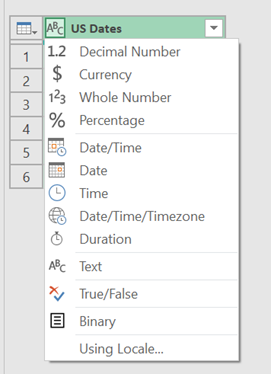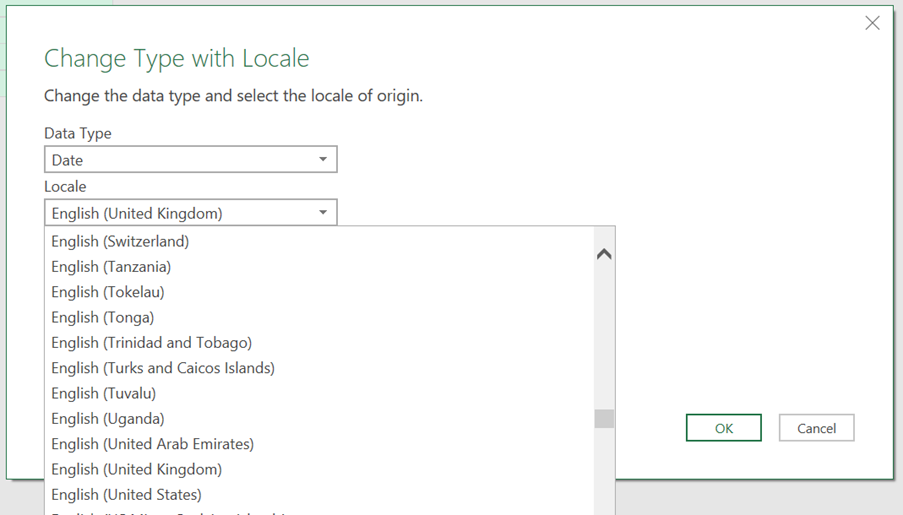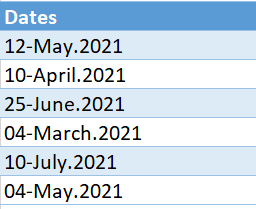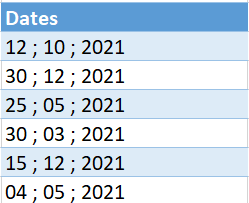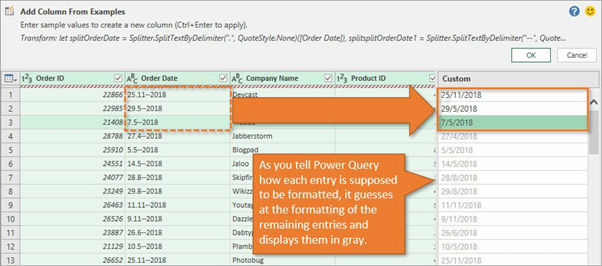Today I’m asking Jens, one of STL’s top Excel trainers, if there is a quick way to fix date issues in Excel. Can I solve date problems in Excel with Power Query?
Hi Jens, do you have advice for me on how to handle date issues in Excel?
Jens: I cannot count how many times I’ve been asked about date issues during my 22 years working as an Excel trainer. “My database returns US dates.” “Excel does not see my dates as dates.” “How can I extract years, months, weeks, and quarters from my dates without adding new columns to my data set?” “Excel sees my dates as text.” “Why is time included in my dates?” The list is long, but the answer is short.
I’m all ears, Jens!
Jens: USE POWER QUERY!
In the past, I had to write complicated VBA code to handle date problems. I’ve used Left, Right, and Mid functions to extract the different parts of the dates to then concatenate it back again to a format Excel could understand as a date.
Converting US dates to UK dates
Many databases, financial applications, and other software extract dates in US format and it can be a pain for Excel users all over the world in countries with a different date format. Microsoft has made it very simple to handle these problems in Power Query.
If you simply import a date in US format into Excel, it will see a date like this: 02/28/2021, as a text string. And a date like this: 12/03/2021, as 12th March 2021, which is wrong because the actual date is 3rd December 2021.
The conversion to UK dates happens in the connection to the source data.
In Power Query, the column with US dates will look like this:
At this point, Power Query sees the US dates as text – indicated by ABC in front of the US Dates header.
All you need to do is to click on ABC, then click Using Locale.
Select the data type Date, then select English (United States) under Locale.
The result will be in the correct date format for the country. In addition, the query connection to the source data will automatically convert the dates correctly for all future entries in the source data.
This is amazing, Jens! Could you share a real-world example with us?
Jens: Excel can be very stubborn. I once had a client who asked for my help. She had dates formatted as you can see in the table below:
She couldn’t get Excel to understand that it was a date column. Whatever she tried, Excel kept on seeing the dates as text strings. Power Query solved her problem in 3 seconds!
If you connect a table with “dates” like these to Power Query, the app will immediately convert the column to the correct date format. You will not need to do anything else; the query will just keep doing it.
If dates contain incorrect characters, Power Query will simply replace them with the correct ones.
The Column From Example tool in Power Query can also handle strangely formatted date formats. If you know the Flash Fill tool in Excel, the Column From Example tool is the equivalent in Power Query.
This tool applies pattern recognition based on examples of how you have previously changed dates to the desired format.
If, for example, you have dates formatted as 30.3-2021, in the same row in the Column From Example column, type 30/03/2021. Power Query will immediately recognise the pattern and fill down the desired formatting. You may have to give the Column From Example tool more than one example to understand the pattern. However, when the tool recognises the pattern, it will apply the correct format, even for new data entries.
Once you have added the Column From Example column, you can simply remove (delete) the date column with the incorrect formatting.
Wow, this will make my life so much easier!
Jens: Power Query not only handles issues with dates, but it can also transform and group dates, and much more.
Any final thoughts about Power Query, Jens?
Jens: For me, Power Query in Excel is a genius tool which can address issues within any data, not just dates, in seconds. All Excel users should know about this tool and use it. This will increase their efficiency and have a huge impact in how much time they spend in Excel. Power Query automates tasks. Once you have shown Power Query the steps you want it to do, it will continue applying the steps to new data. This is something previously only doable by writing complicated VBA code!
STL has a one-day Power Query course which gives great insight into the power of this tool and will make you able to handle many time-consuming tasks in seconds.
Thank you Jens! Now, all Excel users can solve date problems in Excel with Power Query.

